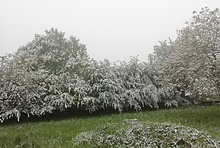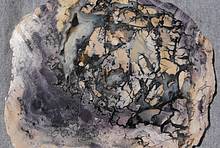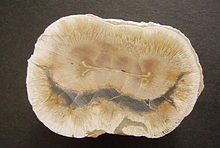Home PageAbout MindatThe Mindat ManualHistory of MindatCopyright StatusWho We AreContact UsAdvertise on Mindat
Donate to MindatCorporate SponsorshipSponsor a PageSponsored PagesMindat AdvertisersAdvertise on Mindat
Learning CenterWhat is a mineral?The most common minerals on earthInformation for EducatorsMindat ArticlesThe ElementsThe Rock H. Currier Digital LibraryGeologic Time
Minerals by PropertiesMinerals by ChemistryAdvanced Locality SearchRandom MineralRandom LocalitySearch by minIDLocalities Near MeSearch ArticlesSearch GlossaryMore Search Options
The Mindat ManualAdd a New PhotoRate PhotosLocality Edit ReportCoordinate Completion ReportAdd Glossary Item
Mining CompaniesStatisticsUsersMineral MuseumsClubs & OrganizationsMineral Shows & EventsThe Mindat DirectoryDevice SettingsThe Mineral Quiz
Photo SearchPhoto GalleriesSearch by ColorNew Photos TodayNew Photos YesterdayMembers' Photo GalleriesPast Photo of the Day GalleryPhotography
╳Discussions
💬 Home🔎 Search📅 LatestGroups
EducationOpen discussion area.Fakes & FraudsOpen discussion area.Field CollectingOpen discussion area.FossilsOpen discussion area.Gems and GemologyOpen discussion area.GeneralOpen discussion area.How to ContributeOpen discussion area.Identity HelpOpen discussion area.Improving Mindat.orgOpen discussion area.LocalitiesOpen discussion area.Lost and Stolen SpecimensOpen discussion area.MarketplaceOpen discussion area.MeteoritesOpen discussion area.Mindat ProductsOpen discussion area.Mineral ExchangesOpen discussion area.Mineral PhotographyOpen discussion area.Mineral ShowsOpen discussion area.Mineralogical ClassificationOpen discussion area.Mineralogy CourseOpen discussion area.MineralsOpen discussion area.Minerals and MuseumsOpen discussion area.PhotosOpen discussion area.Techniques for CollectorsOpen discussion area.The Rock H. Currier Digital LibraryOpen discussion area.UV MineralsOpen discussion area.Recent Images in Discussions
Identity HelpFound Jadeite in Arizona possibly?

16th Jun 2017 21:51 UTCTTomBabbitt
Luster;
Dull on close inspection, adamantine in sunlight because of small crystal faces.
Hardness;
Scratches glass but will not scratch olivine sample. Olivine sample scratches mineral sample.
Streak;
White
Cleavage;
Rough
Habit;
Massive
Color;
Brilliant green to olive green to light olive to light pink.
Here is an image of sample in question;
https://drive.google.com/file/d/0B-R30L8s0o87ZVZQYkxSWnJKT1E/view?usp=sharing
Here is the sample next to the olivine sample for comparison;
https://drive.google.com/file/d/0B-R30L8s0o87b0NCX2NfblFJTEE/view?usp=sharing
Another view;
https://drive.google.com/file/d/0B-R30L8s0o87OVNEZDgza09JRHc/view?usp=sharing
Here is the stone with the inclusion mentioned above;
https://drive.google.com/file/d/0B-R30L8s0o87N1VITklCOEtPZ2c/view?usp=sharing
All the green rocks from the bucket;
https://drive.google.com/file/d/0B-R30L8s0o87VUFYZlViY0xEWDg/view?usp=sharing
https://drive.google.com/file/d/0B-R30L8s0o87RHpjYXpvdm1GNHc/view?usp=sharing
Any info would be appreciated.
Tom
P.S. I fount tourmaline at this location for the first time in this bucket also;
https://drive.google.com/file/d/0B-R30L8s0o87RFdZajl5NlpIM2s/view?usp=sharing
bottom;
https://drive.google.com/file/d/0B-R30L8s0o87clBWRnU0ZUFYYTA/view?usp=sharing
and than on the way back to the car I found this garnet;
https://drive.google.com/file/d/0B-R30L8s0o87WE1lYkRCQkI5Zkk/view?usp=sharing
16th Jun 2017 22:18 UTCRob Woodside 🌟 Manager
The photo of your rock looks like it has been photo shopped with camoflage??? Jadeite or nephrite will have a weathered light coloured rind as does your candidate, but it doesn't look right for either. The lustre seems earthy. I suspect that most of your green rocks are epidote or chlorite bearing.
16th Jun 2017 22:48 UTCOwen Lewis
Looks more like you have some rocks there rather than jadeite . Can you determine accurately the SG of about three different samples? Other determining tests require special equipment and training in their use (optical spectroscope and a totally internally reflecting refractometer).
An outstanding feature of jade is its toughness (*not* hardness - it is not particularly hard). Because it is so tough, a sample of jadeite will not give you a streak when tested on an unglazed porcelain tile. You say that streak testing your stuff gives you a white powder (streak) so it should not be jadeite.
If all this gives you the impression that it is much easier to determine what something is definitely not, rather then what it is, you'd be right :-) A wrong result from a single type of critical ID test is sometimes enough to say definitely that a sample of stuff is not 'X'. Determining what 'X' is may need as as three or four good results from different types of test before one can be sure that 'X' is (say) jadeite and not anything else.

16th Jun 2017 22:49 UTCTTomBabbitt
https://drive.google.com/file/d/0B-R30L8s0o87OTZnZEU5Q3pReXM/view?usp=sharing
https://drive.google.com/file/d/0B-R30L8s0o87ZUk2R0N3UTVFQVE/view?usp=sharing
Epidote is a good candidate but when Inspected up close I see hexagonal crystals and not elongated prisms.
https://drive.google.com/file/d/0B-R30L8s0o87X2hQeWdGMWZONk0/view?usp=sharing
https://drive.google.com/file/d/0B-R30L8s0o87NXBtbzUycWhxXzg/view?usp=sharing
That's why it looks like glass beads in the photo.

16th Jun 2017 22:51 UTCTTomBabbitt

16th Jun 2017 23:03 UTCWayne Corwin
It needs to be tested on an unglazed porcelain tile.

16th Jun 2017 23:23 UTCTTomBabbitt

16th Jun 2017 23:25 UTCTTomBabbitt

17th Jun 2017 00:04 UTCTTomBabbitt
To me nothing is just a rock, they all can be made valuable.
https://drive.google.com/file/d/0B-R30L8s0o87QTZoa082ZGhqQUE/view?usp=sharing
If they are just good Epidote than I call them 'Arizona Emerald Epidote' and sell them at a higher price, which leads us back to the tale of the 'Zuni Diamonds'.

17th Jun 2017 00:45 UTCTTomBabbitt
17th Jun 2017 01:00 UTCOwen Lewis

17th Jun 2017 04:36 UTCSteven Kuitems Expert
17th Jun 2017 05:27 UTCIan Nicastro

18th Jun 2017 17:14 UTCTTomBabbitt
https://drive.google.com/file/d/0B-R30L8s0o87TEhLT2NpLTltUFE/view?usp=sharing
https://drive.google.com/file/d/0B-R30L8s0o87U1NJOGNGRVcwVlE/view?usp=sharing
https://drive.google.com/file/d/0B-R30L8s0o87MWdhcjVwNmlxQzQ/view?usp=sharing
https://drive.google.com/file/d/0B-R30L8s0o87SmdXZFRld1NIaTA/view?usp=sharing
I'm seeing a pattern, Hexagonal crystals with a dart in the center that kind of wear down to an earlobe with a big earring hole.
Now I'm tuned in, I'm looking for Hexagonal crystals with a dart in the center. I'm looking for a crust or the remnants of a crust.
The next set of pictures is from a completely different area, the eastern slopes of the Bradshaw mountains. Sparsely scattered among the many washes are rocks that have the same patterns.
https://drive.google.com/file/d/0B-R30L8s0o87a0wyNUNjclQxN2M/view?usp=sharing
https://drive.google.com/file/d/0B-R30L8s0o87U0lqZnJxVjhEMjg/view?usp=sharing
https://drive.google.com/file/d/0B-R30L8s0o87OUI1c2VPT1dLNDg/view?usp=sharing
To find these you must either posses supernatural prospecting skills or have the ability to spot bright green rocks that stand out like a sore thumb.
Looks like I got the Epidote fever!

19th Jun 2017 03:55 UTCTTomBabbitt
https://drive.google.com/file/d/0B-R30L8s0o87RVpwZm1zSHY3OHM/view?usp=sharing
https://drive.google.com/file/d/0B-R30L8s0o87b016LWh0UURSbVE/view?usp=sharing
the Jadeite appears like rows of hexagonal plates and the Epidote appears fibrous. Its fibrous appearance is most evident on the bottom where it is worn smooth.
https://drive.google.com/file/d/0B-R30L8s0o87V2V3ODZvanJBR2s/view?usp=sharing
Additionally Epidote has cavities in it whereas Jadeite does not.

19th Jun 2017 04:10 UTCDoug Daniels

19th Jun 2017 06:36 UTCThomas Lühr Expert
While reading TTom's post the same thought came to me from somewhwere in the depth of my mind. But i'm also not sure.
19th Jun 2017 12:54 UTCPaul Brandes 🌟 Manager
Your samples remind me of common rocks that have been epidotised during low grade metamorphism and the resulting alteration product that you see today. While nothing special commercially, they do tell a story that scientists can read as to how that corner of the world formed.

19th Jun 2017 13:09 UTCTTomBabbitt

19th Jun 2017 14:51 UTCAlfredo Petrov Manager
And I completely agree with Paul that you have found epidote and no jadeite at all. You might try doing some lapidary work on your epidote - spheres, eggs, cabochons, etc.... Those epidotized rocks, if the color is nice and the material is compact enough, can sometimes have some value as lapidary rock, but jadeite it certainly isn't.

19th Jun 2017 15:11 UTCTTomBabbitt
19th Jun 2017 16:35 UTCJohn Christian

19th Jun 2017 16:37 UTCDonald B Peck Expert
20th Jun 2017 13:33 UTCHarold Moritz 🌟 Expert

20th Jun 2017 21:02 UTCTTomBabbitt

20th Jun 2017 22:43 UTCTTomBabbitt

21st Jun 2017 02:15 UTCTTomBabbitt
Hello, the only jadeite I am familiar with is a tumbled kind we have here. Here is a picture. I know that stone can look very different depending on where it comes from. Hope that helps!
http://imgur.com/a/4nGBp
(I put the picture on imgr)
21st Jun 2017 14:23 UTCOwen Lewis

21st Jun 2017 14:42 UTCAlfredo Petrov Manager
21st Jun 2017 18:09 UTCGregg Little 🌟
I doesn't appear to be altered by man but by nature and she does a much better job!. Once again I reiterate that ID from pictures alone has its pitfalls but if you want to send a sample to me I would be pleased to have the opportunity to take a "hands-on" look at it. Another attribute to support the altered granite conclusion is the granular appearance whereas jade/nephrite is fibrous in texture. This explanation might be more than needed but that goes to show rocks are endlessly interesting without the need for metaphysical attributes.
21st Jun 2017 19:33 UTCOwen Lewis
The more thoughts the merrier!
Just two more thoughtlets from me. One of the great things about polishing transparent or even translucent crystals is that (especially with a microscope and other optical tools) one can get to see what is going on under the surface of the crystal.
1. Here are a few pics of polished jadeite published authoritatively that are an invitation of what to expect. https://www.gia.edu/jade-quality-factor Note that 'granitic' structure referred to is noticeably absent. Of course, as quality reduces so do many expectations until, with rocks, anything goes.
2. The last pics shown by TT have some resemblance to moss-in-snow jadeite. I base my concern regarding faking mainly on the one piece that appears to have been cracked open (itself a bad sign when looking for jade) It seems that the dark green (too dark) blotches on the rough tumbled surfaces are mainly skin-deep. There are some few internal blotches and these are not the dark green visible on the polished exterior.
But we all agree that, fun though it is to chat about, viewing a not-too-sharp-and-closeup pic needs to be backed by some hands-on testing (and experience) to be sure or anything..

21st Jun 2017 20:21 UTCPhil Richardson
Why don't you just wait for cooler weather, and venture down to the Flagg Mineral Foundation annual tailgating show, January 5th through the 7th at Mesa Community College, Dobson Road off of US60. Drop by the Flagg Foundation RV headquarter and ask for any one of our knowledgeable members; Dr. Ray Grant, Les Presmyk, Dana Slaughter, and others. We would be happy to look at it for you, plus someone here might have collected in the area and be very familiar with the material. (We have a lot of lapidary arts dealers, such as Jimmy Vacek, who could also look at it.)
Phil

24th Jun 2017 23:05 UTCTTomBabbitt
When it rains it pours an my good fortune is also yours. Go off of 260 south along Cherry Road into the Black Hills. County jail is on the right , about a half mile in you cross a cattle guard and the paved road gives way to a well maintained dirt road. The road parelells a gully to your left. There are a number of camping roads to the left. Green stones are popping out of the slopes like lettuce.
https://drive.google.com/file/d/0B-R30L8s0o87dVBQUTFBVE1SMWM/view?usp=sharing
at the bottom bigger stones can be found ,
https://drive.google.com/file/d/0B-R30L8s0o87WmR3WXBWdWdUb1U/view?usp=sharing
https://drive.google.com/file/d/0B-R30L8s0o87Z2RnYkE4X0RoOW8/view?usp=sharing
As you get to the mountain switch to the gulch to the west because of a county gravel yard. Bigger stones of other colors can be found here. look for diamonds, 'sandwiches',and wedges.
https://drive.google.com/file/d/0B-R30L8s0o87SkJpd0RyZEVlR28/view?usp=sharing
https://drive.google.com/file/d/0B-R30L8s0o87S2hDdmxfNVNLalk/view?usp=sharing
Now way across the state along the edge of Concho creek around Hunt in Cochise County. I have found more 'sandwiches' that are near transparent. Colors range from gray to red, I even found a clear pink stone.
https://drive.google.com/file/d/0B-R30L8s0o87NkE0dXd2Q2VPemc/view?usp=sharing
https://drive.google.com/file/d/0B-R30L8s0o87ZG02cnp0d0JSZmM/view?usp=sharing
https://drive.google.com/file/d/0B-R30L8s0o87Y21hOU5SV2loeVU/view?usp=sharing
https://drive.google.com/file/d/0B-R30L8s0o87bThBalVFTi1hZHM/view?usp=sharing
25th Jun 2017 07:48 UTCIan Nicastro

25th Jun 2017 14:20 UTCIlkka Mikkola
If you think they are economically valuable, XRD is a simple, sure and cheap solution.
Ilkka

26th Jun 2017 00:57 UTCDoug Daniels




Mindat.org is an outreach project of the Hudson Institute of Mineralogy, a 501(c)(3) not-for-profit organization.
Copyright © mindat.org and the Hudson Institute of Mineralogy 1993-2024, except where stated. Most political location boundaries are © OpenStreetMap contributors. Mindat.org relies on the contributions of thousands of members and supporters. Founded in 2000 by Jolyon Ralph.
Privacy Policy - Terms & Conditions - Contact Us / DMCA issues - Report a bug/vulnerability Current server date and time: April 23, 2024 21:02:46
Copyright © mindat.org and the Hudson Institute of Mineralogy 1993-2024, except where stated. Most political location boundaries are © OpenStreetMap contributors. Mindat.org relies on the contributions of thousands of members and supporters. Founded in 2000 by Jolyon Ralph.
Privacy Policy - Terms & Conditions - Contact Us / DMCA issues - Report a bug/vulnerability Current server date and time: April 23, 2024 21:02:46











